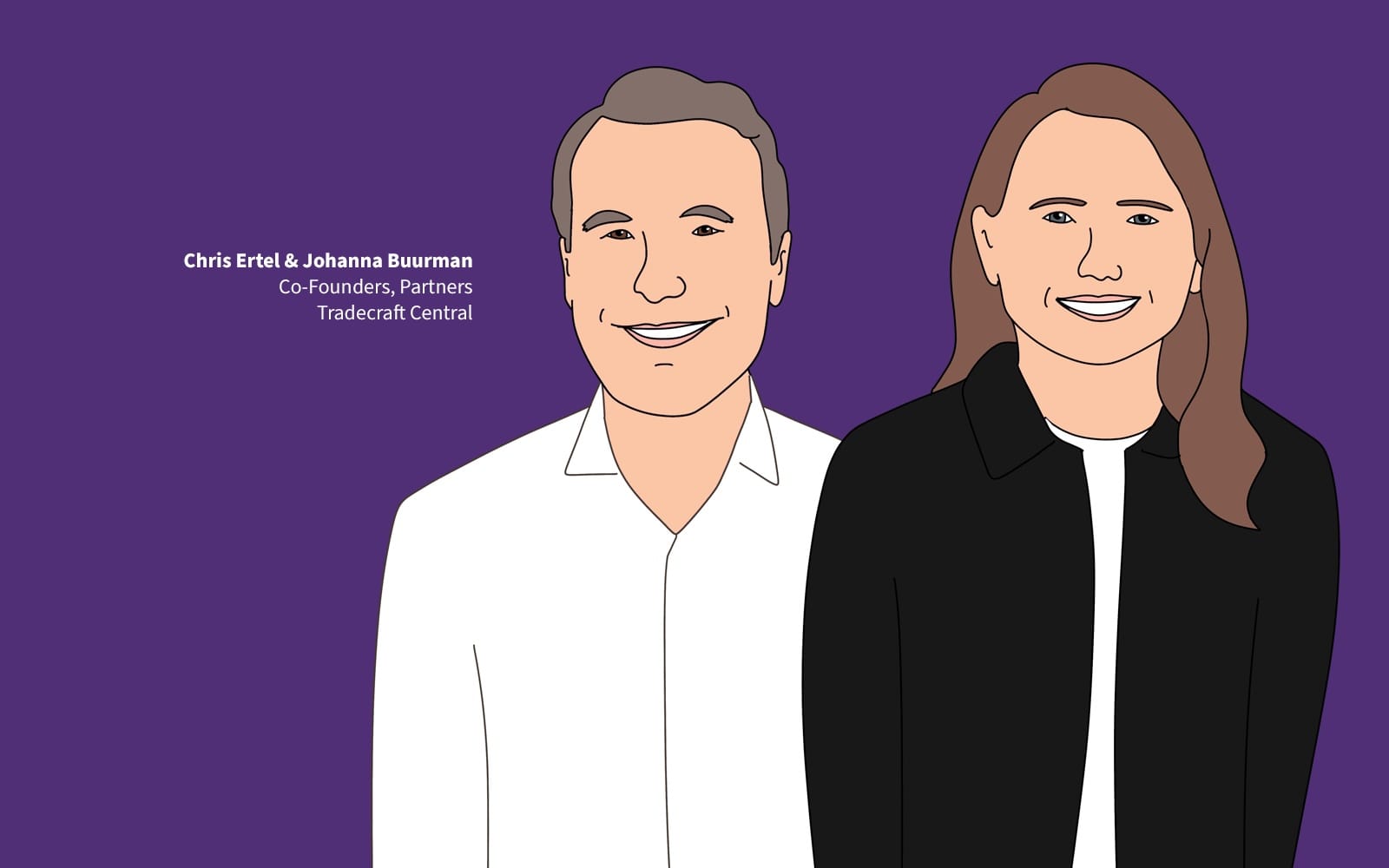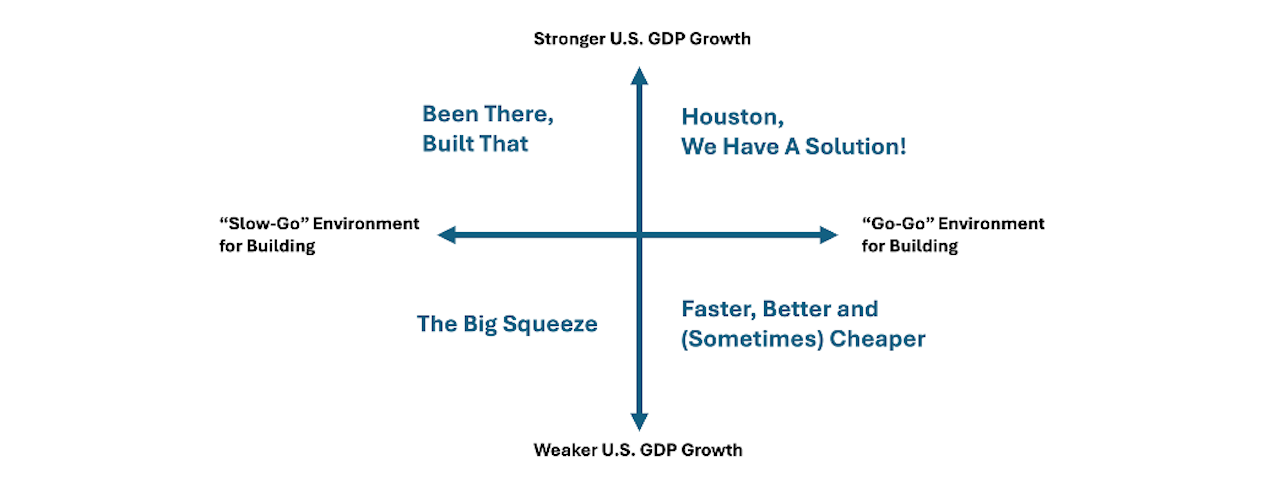Leadership
Four Futures of Homebuilding: Which One Are You Ready For?
The future of U.S. homebuilding won’t unfold in a straight line. At Focus On Excellence, leaders will work through four bold scenarios that sharpen decisions for 2026—and reshape the industry by 2030.

At most industry conferences, the real conversations happen in the hallways. That’s where leaders compare notes, test instincts, and wrestle with the big questions no keynote can settle.
- Bank financing is tighter.
- Land costs are higher.
- Entitlements are slower.
- Public builders are doubling down on strike price and pace.
Margins for error have shrunk. Leaders need more than forecasts — they need structured practice in decision-making in uncertain situations.
And that is precisely what Focus On Excellence Leaders summit and workshop (Oct. 27–29, Four Seasons Denver) is designed to deliver: a one-of-a-kind, heart-and-soul exercise in high-stakes leadership for U.S. homebuilding.
We've flipped the script.
The hallway conversations are the main event. Using high-energy, quicker, and livelier presentations to set the stage for small-group interactions on critical topics, we immediately transition into roundtable workshops where leaders roll up their sleeves together.
This year, for the first time, the hands-on, full-engagement process will include a proprietary scenario framework designed by workshop facilitators Chris Ertel and Johanna Buurman of Tradecraft Central.
It’s not theory, it’s a toolset—and it will help every participant stress-test their strategies for the turbulent decade ahead.
As Chris Ertel puts it:
U.S. homebuilders today face baffling uncertainties that make it hard to know which way is forward. Will the costs of capital rise or fall? How about the cost of land, labor, and supplies? And what about public policy trends—will they favor or push back against building more housing in the coming years?”
A Glimpse at the Framework
Ertel titles the model he and Buurmann have developed, “New Insights on the Future of U.S. Homebuilding to 2030.” It borrows from scenario-planning methods first developed at the RAND Institute in the 1950s—an approach that leading organizations still use to navigate complexity when no forecast is reliable.
Like it or not, every homebuilder is an accidental futurist, placing medium- to long-term bets without a crystal ball to guide the way. As Stewart Brand wrote in How Buildings Learn: ‘All buildings are predictions; all predictions are wrong.’”
The framework crosses two defining uncertainties:
- GDP Growth: strong or weak
- Environment for building: “Go Go” or “Slow Go”
The 2x2 matrix that results yields four plausible futures for the U.S. homebuilding industry by 2030.
These scenarios are not predictions. They are structured thought experiments — plausible worlds that help leaders prepare for uncertainty. The goal is to widen the aperture of planning, so we’re not blindsided by the future but equipped to navigate it.”
The Four Futures
That framework unfolds in four divergent futures, depending on two forces: the strength of the U.S. economy (GDP growth) and the ease or difficulty of the building environment (policy, capital, land, labor).

Houston, We Have a Solution (Strong GDP, Go-Go Environment)
The U.S. economy could grow stronger than expected, thanks to AI-led productivity gains, and a rising ‘YIMBY’ movement… In this scenario, there is ample capital for building housing in all segments, and growing support to do so as quickly as possible.”
Faster, Better, and (Sometimes) Cheaper (Weak GDP, Go-Go Environment)
Necessity could become the mother of innovation, with an increased focus on affordable housing for the mass market, using new technologies to drive process efficiencies and modular construction to deliver good enough housing solutions.”
The Big Squeeze (Weak GDP, Slow-Go Environment)
Homebuilders would be squeezed from all directions—price sensitivity of demand with rising costs—as the U.S. economy falls victim to a ‘stagflation’ resembling the 1970s.”
Been There, Built That (Strong GDP, Slow-Go Environment)
The biggest surprise of the next five years could be… that there are no major surprises! … The result for homebuilders would be more of the same: a focus on the higher end of the market in faster-growing regions in the south and west.”
Why It Matters for Leaders
Ertel challenges every participant to ask:
- Which scenario do you think is most likely—and why?
- Which one are you least prepared for?
- How would you pivot if surprised by a scenario you didn’t expect?
And he underscores the point:
Scenario planning challenges us to develop our own point of view about the future after considering all the meaningful alternatives… That way, we can act decisively in the face of uncertainty—and be prepared to pivot quickly in case our assumptions prove wrong. Scenarios are powerful because they help leaders move beyond analog reflexes. The test isn’t who can predict the future; it’s who can build the muscle to adapt, no matter which future arrives.”
A Workshop Like No Other
At Focus On Excellence, participants won’t just hear about these scenarios—they’ll apply them directly to their own 2026–2027 business strategies. Working side by side, leaders will:
- Stress-test their plans against all four possible futures.
- Identify gaps in resilience, agility, and people strategies.
- Build shared language and insights that can cascade into their organizations.
This is the differentiator of Focus On Excellence. Not theory. Not passive listening. But leader-to-leader collaboration, guided by facilitators who’ve run similar processes with top enterprises across industries. If you want to know what makes the difference between waiting on better conditions and building the resilience to capitalize on them, this sneak peek says it all.
Register Now: Focus On Excellence, Oct. 27–29, Four Seasons Denver.
MORE IN Leadership
Homebuilding Strategists Talk Candidly About Getting To 2030
At Denver’s Focus on Excellence summit, five builder leaders strip away spin. They reveal real pressures—capital, costs, people—and how they’re fighting back.
D.R. Horton’s Greenville Play Signals Private Builder Squeeze
The nation’s largest builder isn’t slowing tuck-in acquisitions. SK Builders’ exit reveals why privates face thinner "lower-for-longer" margins — or, perhaps, the exit door.
Insurance Costs Now Define Housing’s Affordability Equation
Insurance premiums have soared nearly 70% in five years, now consuming almost one in ten housing dollars. Homebuilders who plan for insurability early protect both margins and buyer trust.
